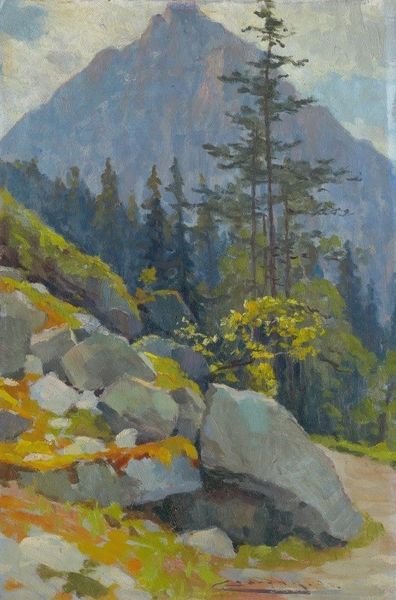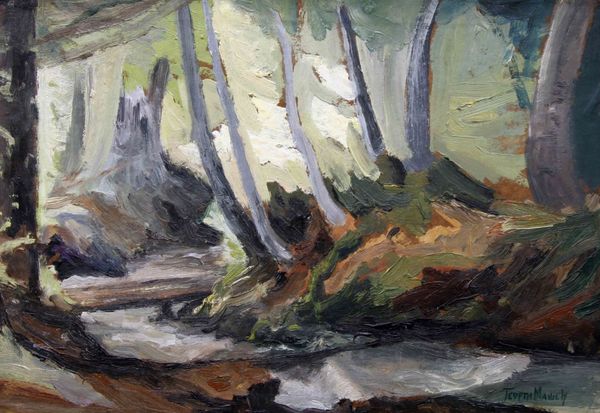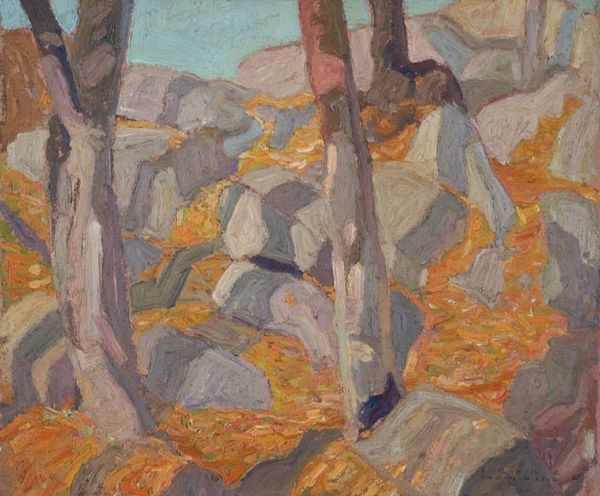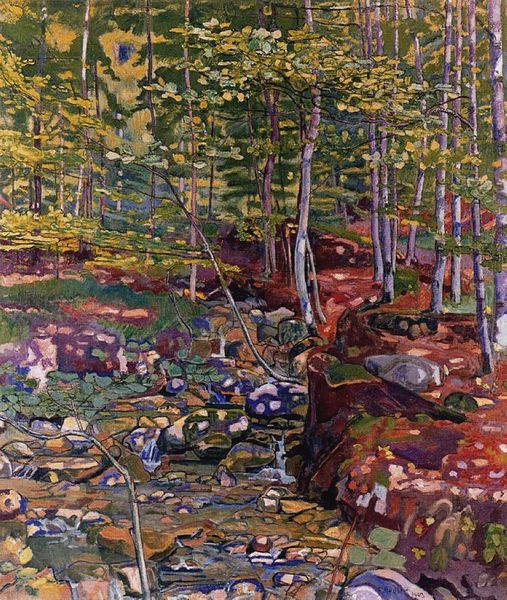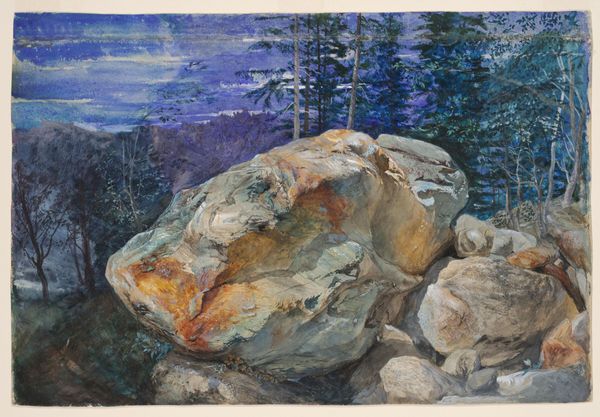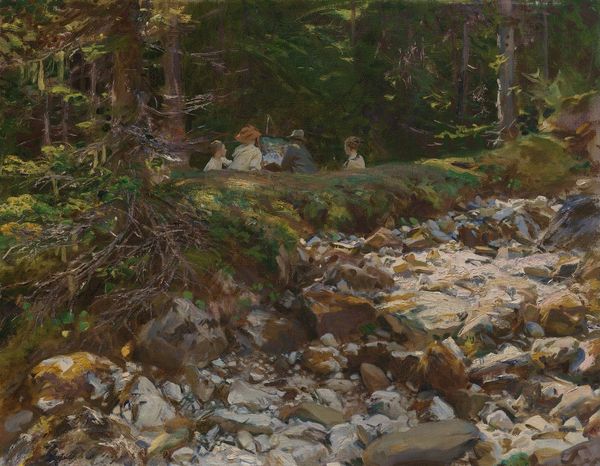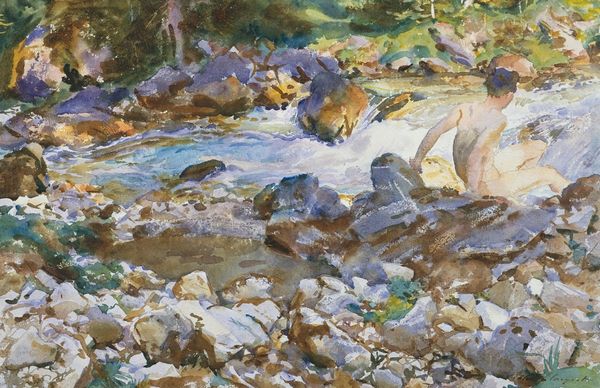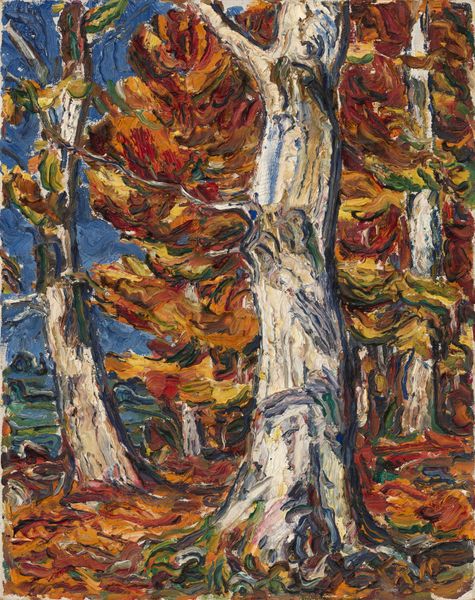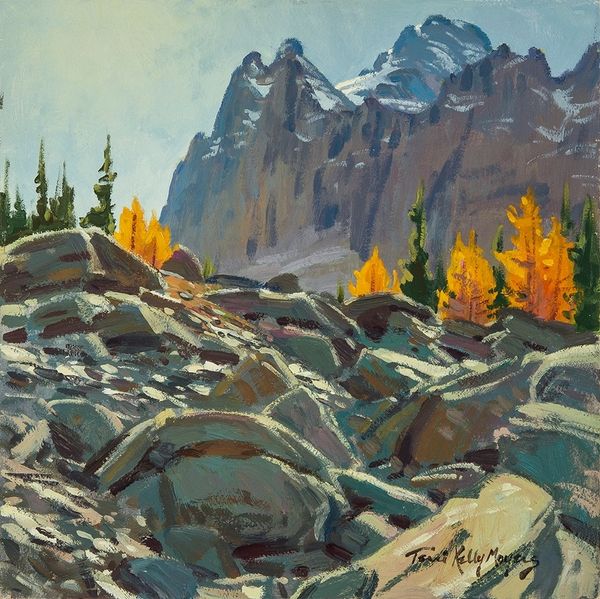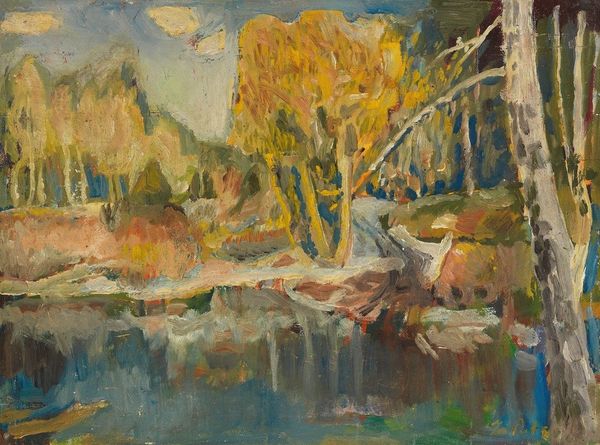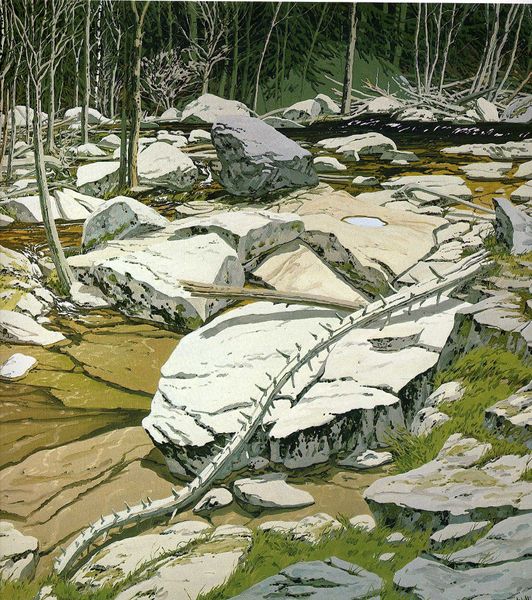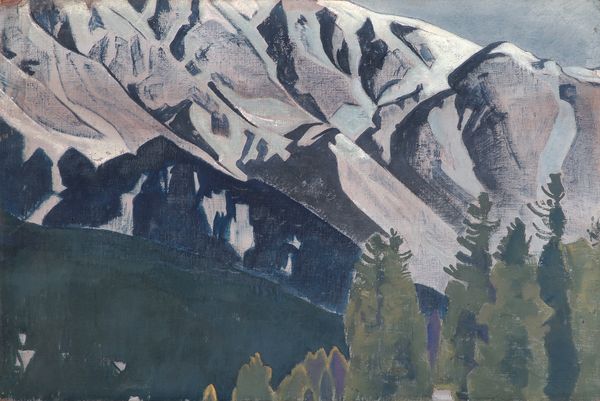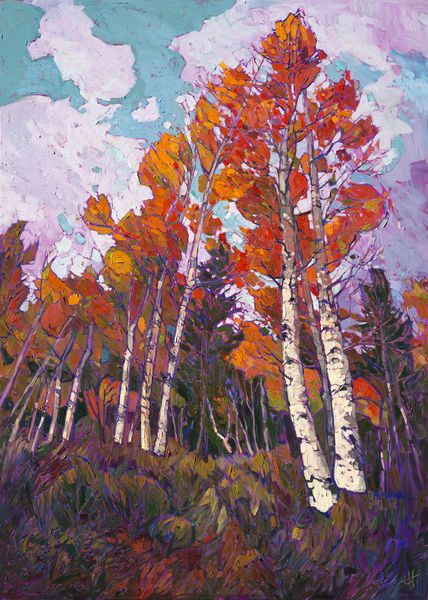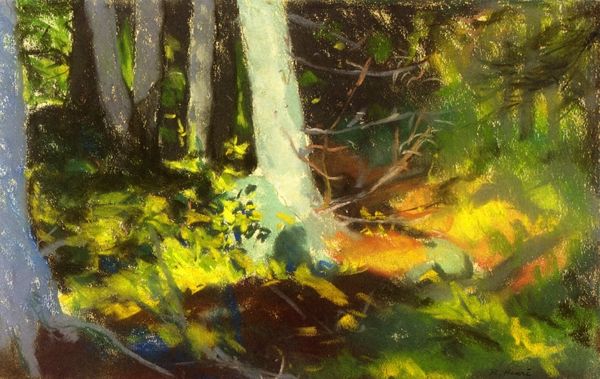
Copyright: Public domain US
Editor: So, here we have Lawren Harris's "Autumn, Batchewana" from 1918, a landscape painted with oil on panel. I'm really struck by the use of colour – how these vibrant autumnal hues are contrasted against those cool blues and greys of the rocks. It’s a bold scene. What stands out to you most about this work? Curator: I see a visual elegy. Harris presents us with more than just a landscape; he gives us a record of memory. The vibrant autumnal colors are the remnants of summer’s life, boldly emblazoned before their descent into winter's slumber, much like our memories flare brightest before fading. The rocks stand firm, eternal, echoing endurance. Notice how his brushstrokes mimic the natural world, almost creating symbolic languages within. Do you feel that sense of continuity and change, or perhaps some psychological depth conveyed through those formal elements? Editor: Definitely. It's not just a pretty picture, it's laden with symbolism. Those resilient rocks, almost defiant, juxtaposed against that riot of autumnal color really speak to the idea of permanence against impermanence. That resonates even now. Curator: Indeed. These images aren’t isolated; they join a larger narrative. Harris links the landscape to the human condition and consciousness by utilizing a cultural visual language of romanticism. Each choice adds to the emotional and symbolic density of the painting, almost like a visual poem handed down to us across time. Has studying it changed your initial understanding? Editor: Absolutely, it's made me appreciate how even landscape painting can carry such emotional and symbolic weight. It is less of a visual record and more of an artifact that reflects a state of mind! Curator: Precisely! Art is at its best when we let it show us our human reflection.
Comments
No comments
Be the first to comment and join the conversation on the ultimate creative platform.
